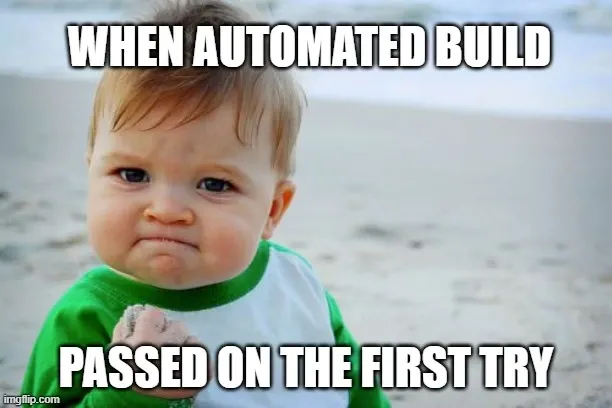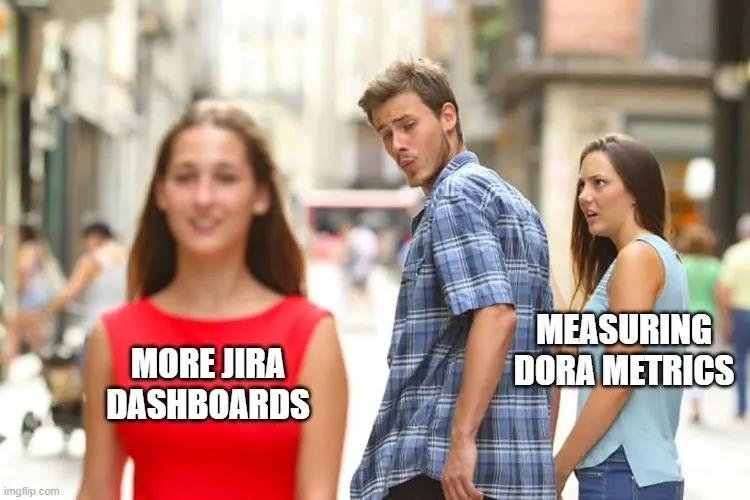Breaking Agile Rules: How Top Tech Companies Create Successful Hybrid Frameworks

Published on 21 August 2025 by Zoia Baletska
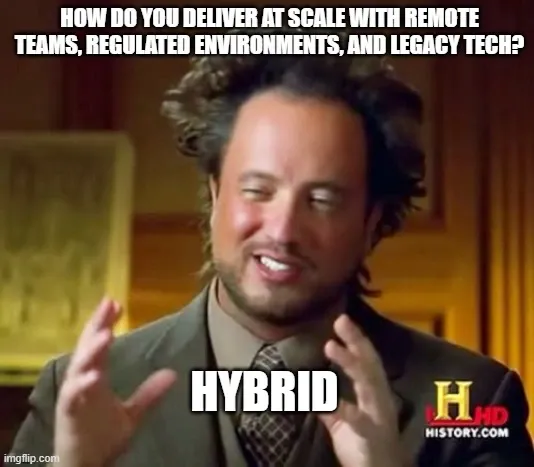
Strict adherence to Agile methodologies might not always be the best approach. Top tech companies are breaking traditional rules to create more effective frameworks, which signals a revolution in hybrid project management.
Pure Agile shines in certain contexts, yet many organisations now find value in a hybrid approach. These hybrid methodologies blend Agile methods with other non-Agile techniques. The resulting flexible hybrid life cycle adapts to project complexity, stakeholder requirements, and organisational constraints. Large organisations with varied team structures benefit significantly from these hybrid project management methodologies.
Companies can create an all-encompassing project management strategy that tackles modern work environment challenges by combining each methodology's strengths. This becomes crucial now that hybrid work models have made workflows more complex. Teams operate across time zones and cultures with different levels of Agile maturity.
This piece examines how leading companies reimagine project management. They combine the best elements from different frameworks and achieve remarkable results. Our Agile Analytics platform helps identify bottlenecks and improve productivity. It enhances work satisfaction with practical insights by connecting data and experience for targeted improvements.
Why Top Tech Companies Break Agile Rules
Tech giants have found that strictly following pure Agile methods can sometimes hurt rather than help their success. Their real-world experience points to practical adaptations that blend the best elements from different methodologies.
Limitations of Pure Agile in Large-Scale Projects
Big organisations face their biggest hurdles when they try to implement pure Agile approaches. Teams with complex dependencies can't coordinate their work effectively. Traditional Agile methods don't deal very well with strict regulations, fixed budgets, and interconnected physical components in large infrastructure projects. Teams can work well with Agile, but the rest of the organisation often can't keep up [1].
Pure Agile methods haven't shown much success with remote teams, outsourcing, safety-critical software, and complex systems. Many companies now use hybrid project management approaches that keep formal controls while staying flexible.
Need for Predictability in Regulated Environments
Regulated industries need predictable outcomes and compliance, which often clash with traditional Agile practices. About half of the companies blame their Agile "failures" on resistance to change or culture clashes. On top of that, it's hard to maintain detailed documentation and traceability with Agile's focus on quick development - both crucial for regulatory compliance.
Hybrid methods outperform in every category except Change Adaptability, where Agile has a slight edge. The biggest difference shows up in Stakeholder Satisfaction, which suggests hybrid models work better with communication, expectations, and formal governance in regulated environments [2].
Teams can use Agile Analytics to see how lead time metrics and team feedback connect. This helps spot where compliance requirements slow things down without compromising quality or governance.
Balancing Innovation with Governance
Companies modify their Agile approaches to strike the right balance between innovation and governance. Technology changes faster every day, so organisations need governance frameworks that can keep up.
Successful companies usually adapt their existing rules to handle specific risks without killing innovation. This works best through mutually beneficial partnerships among industry leaders, civil society groups, and academics.
Agile Analytics platform makes this balance possible by linking operational metrics with team feedback. Companies learn how governance affects team satisfaction and performance. These insights help them make focused improvements that keep compliance intact while innovation flows freely.
Core Elements of a Successful Hybrid Agile Framework
Successful hybrid frameworks blend specific elements from multiple methodologies to create adaptable systems that work for projects of all types. These frameworks maintain structure where needed and allow flexibility where it matters most.
Combining Scrum Sprints with Waterfall Milestones
Scrum's iterative approach and Waterfall's structured milestones are the foundations of effective hybrid project management. This model uses Waterfall to set the original framework with clear project plans and well-defined milestones. Scrum techniques then enable iterative development and adjustments. Teams can incorporate sequential phases for planning and documentation, followed by collaborative sprints for development and testing.
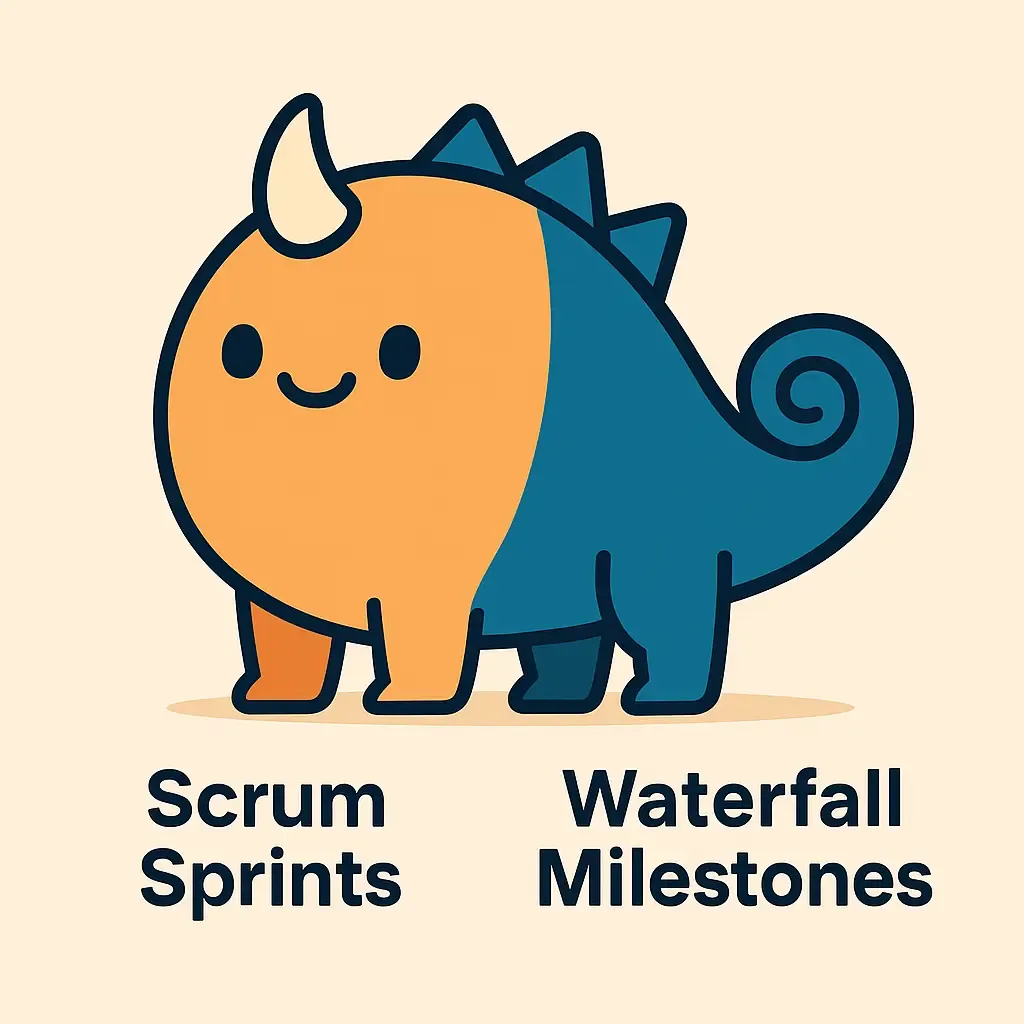
Hybrid approaches work best with a "Sprint 0" lasting two weeks to two months. Teams define the minimum viable product (MVP) and build a strong product backlog during this time. This original waterfall-like planning gives clear direction before moving to agile sprints. Our Agile Analytics platform helps teams track how well this hybrid approach works. It connects metrics like lead time with team feedback and shows relationships between structured planning and team satisfaction.
Using Kanban for Continuous Delivery in Hybrid Life Cycle
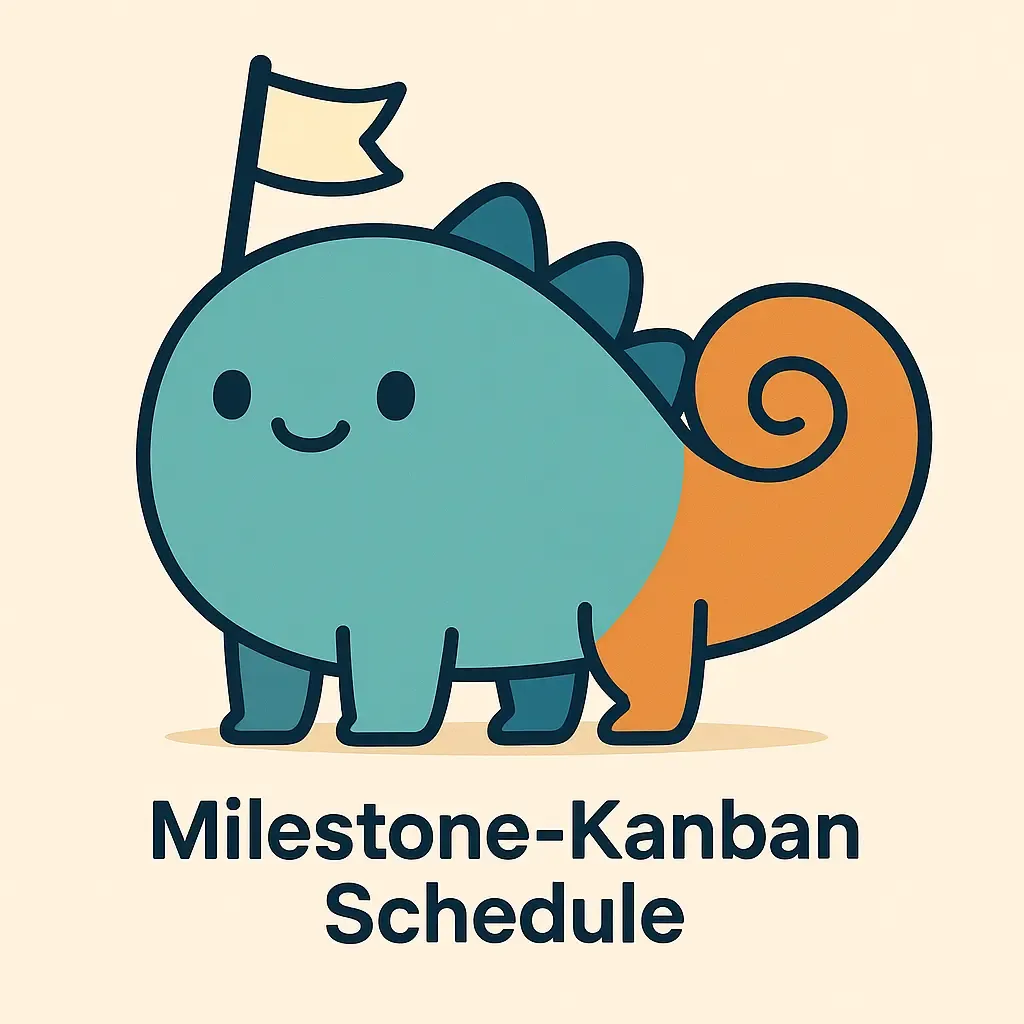
Kanban boards help teams visualise and manage workflows within hybrid frameworks. Unlike Scrum's fixed-time sprints, Kanban lets teams release updates whenever they're ready. Teams handling different priorities and sizes of incoming requests find this flexibility valuable.
Key Kanban elements for hybrid frameworks include:
-
Visual workflow boards that track tasks from backlog to completion
-
Work-in-progress (WIP) limits that prevent bottlenecks
-
Lead time and cycle time metrics that measure efficiency
Kanban combined with milestone planning creates what practitioners call "Milestone-Kanban Schedule" (MKS). This technique suits projects with clear deliverables but uncertain time and effort requirements.
Integrating Lean Principles for Waste Reduction
Lean thinking makes hybrid frameworks better by focusing on customer value while reducing waste. Agile mainly addresses product progress, while Lean principles target process improvements through continuous improvement methods like Kaizen.
Effective hybrid frameworks need both continuous delivery (Agile) and continuous improvement (Lean) optimised throughout the value stream. Successful teams analyse processes regularly. They make small improvements and map feature flow from start to finish to find bottlenecks.
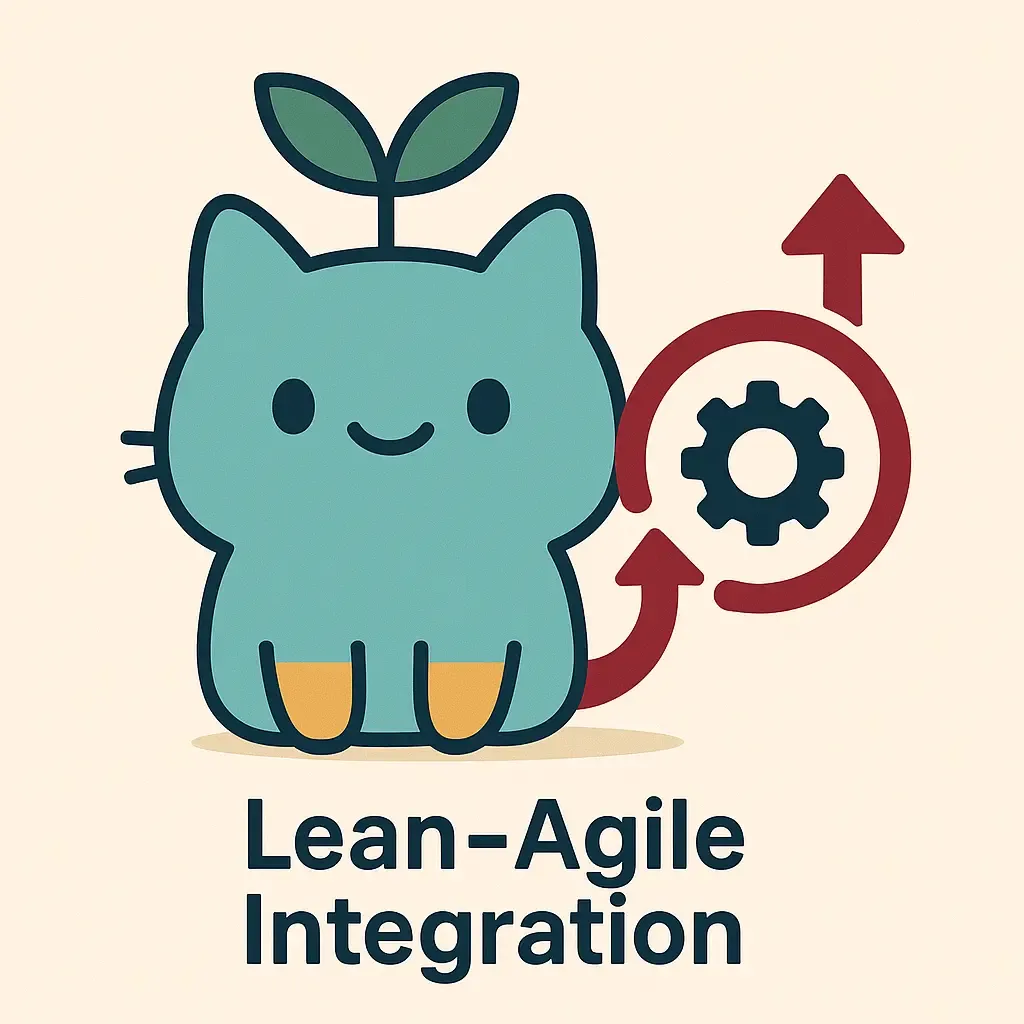
Hybrid project management lies in its unique way of maintaining governance structures while staying agile in today's ever-changing business environment. This balanced approach cuts project delivery times by up to 30% and improves quality metrics in organisations of all sizes.
How to Build a Hybrid Agile Framework That Works
Creating a hybrid framework that works needs a well-laid-out approach adapted to your organisation's unique needs. Successful companies use these steps to implement hybrid project management methodologies and deliver results.
Step 1: Assess Project Complexity and Team Maturity
Your project's unique characteristics, complexity, and team dynamics need assessment first. The team's size, skillset, project complexity, and organisational culture play crucial roles. This full picture helps you decide if a "thinner" layer of planning suits uncertainty or a "thicker" planning approach fits more predictable projects [3].
Step 2: Select Practices from Agile and Traditional Models
The assessment results guide your choice of techniques. You can blend Waterfall elements like detailed work breakdown structures for structured planning. Time-boxed sprints and daily stand-ups from Agile practices work for iterative development. Your framework should match your project's uncertainty level.
Step 3: Arrange Stakeholders on Hybrid Project Management Methodology
Early stakeholder participation ensures buy-in and alignment. A clear project charter outlines objectives, scope, and key deliverables. The benefits of your hybrid approach need regular, transparent communication that addresses concerns.
Step 4: Train Teams on Hybrid Workflows and Tools
Teams need detailed training on your hybrid methodology. Tools that support both Agile and traditional practices prove essential [4]. Our Agile Analytics platform helps teams see workflows, track lead times, and relate operational metrics with team feedback to spot bottlenecks.
Step 5: Iterate and Improve Based on Feedback
Regular retrospectives create feedback loops. Teams should review both Agile iterations and project phases. Your framework grows stronger with ground performance data and team input.
Tools and Metrics That Power Hybrid Agile Success
A powerful set of tools and metrics bridges traditional planning with agile execution in every successful hybrid methodology.
Using Agile Analytics to Associate Lead Time and Team Feedback
Lead time metrics help measure development efficiency in effective hybrid frameworks. These metrics show how work items move through your system—from the original request to delivery. Our Agile Analytics platform identifies bottlenecks and highlights processes that affect both satisfaction and delivery speed by linking lead time with team feedback.
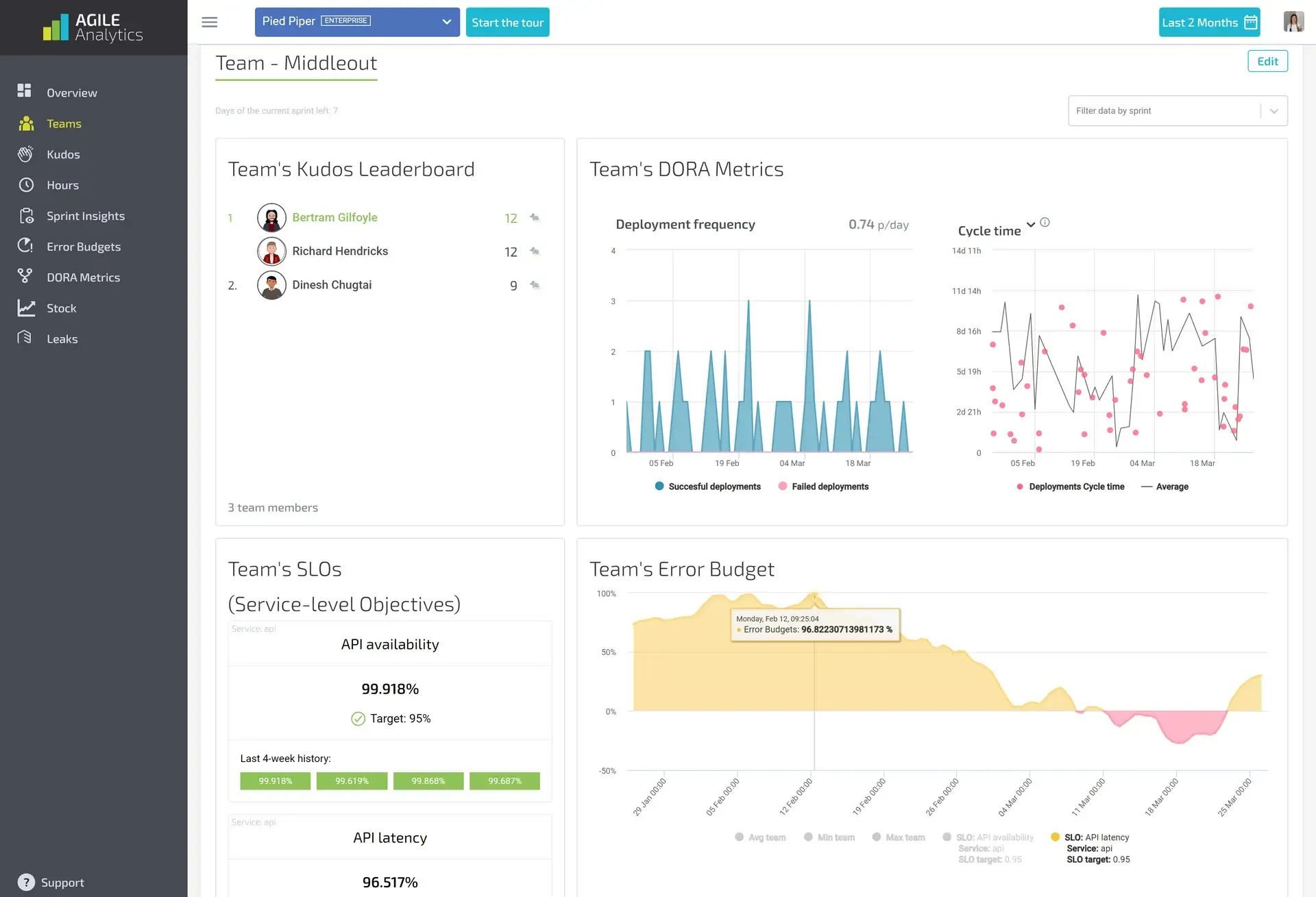
Tracking SLOs and Error Budgets for Operational Reliability
SLOs give teams a framework to balance state-of-the-art solutions with reliability. SLOs define acceptable error thresholds—creating an "error budget" of allowed failures, unlike rigid SLAs. An API handling 100,000 requests with a monthly SLO of three 9s (99.9%) can have 100 failed events during that period [5]. Teams can focus on new features when staying under their error budget. Stability improvements become a priority when teams exceed it.
Visualising Workflow with Kanban Boards and Gantt Charts
Hybrid frameworks work better when Kanban's visual workflow is combined with Gantt's structured timeline. Tasks move through stages like "To Do," "In Progress," and "Done" on Kanban boards. Gantt charts provide a map of high-level epics, features, and release plans. Teams can support daily execution and long-term planning with this dual visualisation.
Automating Retrospectives and Feedback Loops
Retrospectives play a vital role in hybrid environments. Teams can collect feedback asynchronously with automated retrospective tools that streamline meeting preparation. These tools help maintain consistent documentation of improvement efforts. Equal participation happens wherever the team is located when following the "remote first" principle.
Conclusion
Organisations must break traditional Agile rules to balance structure with flexibility. This piece shows how top tech companies create custom hybrid frameworks. These frameworks adapt to unique challenges while preserving Agile methodologies' core benefits. Hybrid approaches prove especially valuable when teams manage large-scale projects, operate in regulated environments, or balance state-of-the-art ideas with governance needs.
Teams can build successful hybrid frameworks by combining Scrum sprints with Waterfall milestones. They also use Kanban boards for continuous delivery and Lean principles to reduce waste. This practical approach helps teams keep formal control structures while responding quickly to changing priorities.
Your team's maturity and project complexity determine the effectiveness of a hybrid framework. The right mix of methods depends on your specific situation. Teams must pick suitable practices from both Agile and traditional models. They need to align stakeholders' expectations, give detailed training, and improve based on real-life performance.
Evidence-based tools have become the foundation of successful hybrid implementations. Our Agile Analytics platform shows this by linking operational metrics with team feedback. It highlights connections between processes and outcomes. Teams using this platform can spot bottlenecks, increase efficiency, and boost work satisfaction through actionable insights rather than guesswork.
The future belongs to organisations that adapt methodologies to their needs instead of forcing rigid frameworks. Hybrid Agile approaches will keep evolving as companies find new ways to mix structure and flexibility. Therefore, teams with the right tools and mindset will gain the most important advantages in delivery speed, product quality, and satisfaction.
Successful organisations will accept new ideas with this hybrid mindset. They take what works from methodologies of all types while discarding what doesn't. Your teams can reach their full potential with a well-designed hybrid framework, whether you manage complex infrastructure projects or develop innovative software products.
Supercharge your Software Delivery!
Implement DevOps with Agile Analytics
Implement Site Reliability with Agile Analytics
Implement Service Level Objectives with Agile Analytics
Implement DORA Metrics with Agile Analytics



